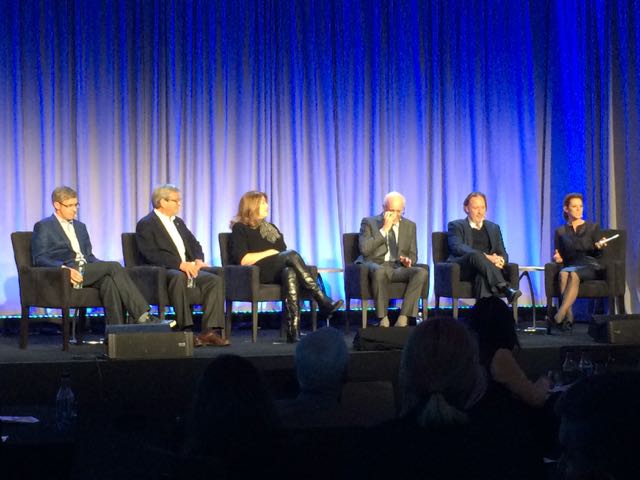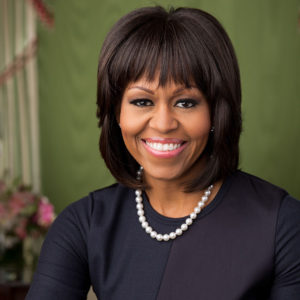Did you know that of the 7.4 billion people on earth today, 6 billion of us have mobile phones? And, according to Activate CEO Michael J. Wolf, of the 6 billion of us with mobile access, only 4.5 billion have access to running water?
What does that mean for the world of content, and how content will change the world?
Discussions centered on those questions and more this week at MPA’s annual American Magazine Media Conference (AMMC) in New York, an event that gathered more than 400 publishing and media leaders and influencers to network and share insights.
The featured sessions and panels offered a wealth of perspectives on the state of our industry today and what’s down the road, focusing on everything from tech innovations, achieving balance, and transformation to celebrity news, election coverage, content marketing, and more. And, of course, it’s almost always about mobile now.
Here’s a recap of some highlights:
Being Nimble
One of the interesting sessions from Day 1 gathered leaders from top independent brands to talk about the benefits—and perils—of “going it alone.” Led by Bloomberg TV’s Stephanie Ruhle, panel speakers included Dwell’s Michela O’Connors Abrams, Publisher Larry Burstein, National Geographic’s Declan Moore, Forbes’ Mike Perlis, and The Economist’s Paul Rossi.
Discussion focused on how independents are extending their brands through innovative product launches, building audience engagement and community, and taking advantage of their ability to move quickly on new opportunities—highlighting their greater ability to take risks and diversify with less impact.

Let Girls Learn
One of the highlights of this year’s event was an appearance by First Lady Michelle Obama, who spoke about the critical role media organizations play in raising awareness and promoting action around important humanitarian efforts like Let Girls Learn. The initiative, launched by the President and First Lady in March 2015, seeks to “address the range of challenges preventing adolescent girls from attending and completing school and from realizing their potential as adults,” according to the program’s website.
Mrs. Obama emphasized the need to pay attention to the media climate in order to reach people where they are and according to how they consume content.
Moderated by More magazine chief Lesley Jane Seymour, panel guests included actors Lena Dunham and Julianne Moore, who also shared their perspectives on the impact of media as a platform for change and education, each targeting different initiatives important to them.
Finding Balance
In a lively discussion about the impact technology is having not only on the media industry but on our personal lives as well, online news pioneer Arianna Huffington and Cosmopolitan’s Joanna Coles touched on everything from business innovation to aligning print and digital. Huffington discussed her upcoming book, The Sleep Revolution, which, as the title suggests, focuses on the need for balance when it comes to technology, productivity, and sleep.
“Only 1% of the population has a genetic mutation that allows that person to be healthy with five hours or less of sleep,” Huffington said. Her mission with the book, which the audience received as a pre-release copy, is to change the expectation and badge of honor that suggests that sleep deprivation makes us more successful, especially for young people. Her message is that if we are really going to have success and change the world, we need to be as healthy as ever.
Politics
 Lunch session hosts Gayle King and Seth Myers managed to weave politics and the role of media into an entertaining and candid (off the record?) discussion about the Iowa caucuses. The session focused on the role of media in portraying and giving airtime to candidates and accountability in elections, and offered inside views and opinions from those who analyze the political landscape and its success (or lack thereof) 24/7.
Lunch session hosts Gayle King and Seth Myers managed to weave politics and the role of media into an entertaining and candid (off the record?) discussion about the Iowa caucuses. The session focused on the role of media in portraying and giving airtime to candidates and accountability in elections, and offered inside views and opinions from those who analyze the political landscape and its success (or lack thereof) 24/7.
Big Data
There were also some great breakout sessions. James Bennett, EIC and president of The Atlantic, led a session called How to Put Audience Attention Data to Work. We are always interested in learning about content business intelligence and so I found this particular session chock-full of great information on how publishers are measuring real-time engagement at the pixel level. James shared examples of how The Atlantic’s story about ISIS was a great example of how to leverage analytics and respond to and enhance content in real time as a story unfolds and gains traction.
Adam Clarkson of ChartBeat shared some real-world examples of how the product can deep dive and help publishers drive engagement down to a second-by-second level. Adam Jaffe, VP of growth at Mic, and Thomas McBee, editor and director of growth at Quartz, also added some valuable insights.
The Wrap?
It’s going to be one of the most interesting years yet for publishers, and all businesses that need content to generate revenue. Ideally, this puts publishers in an opportune position, because they have vast amounts of content, and they know how to effectively produce it.
And the battle for mobile engagement will continue, as will the competition between the growing number of social platforms. Understanding performance and being able to respond quickly is just one aspect of the nimbleness that all agree is the foundation for media success.
Posted by: Margot Knorr Mancini




